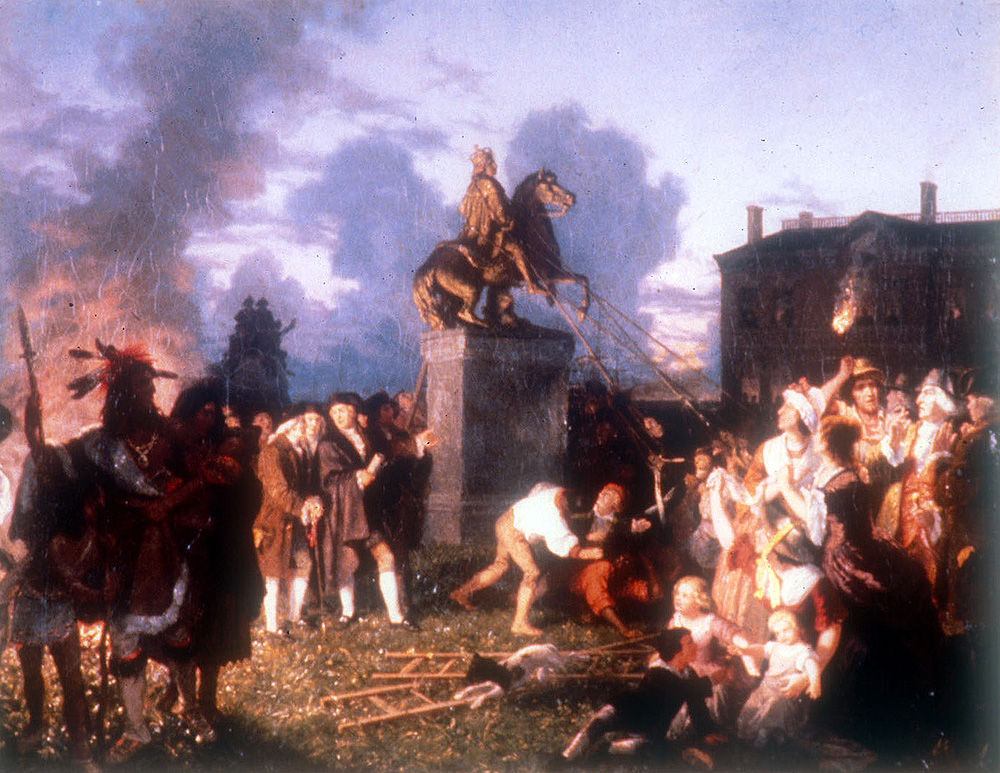Censorship has been a big issue in the U.S. since, well, before there was a U.S.
You’re on the Sound Beat.
The first song officially banned on our soil was “A Song Made Upon the Election of New Magistrates To the City”, written by John Peter Zenger, owner of the first printing press in the colonies. Seems King George didn’t appreciate the mocking of local officials.
Fast-forward a couple centuries and banned songs took on a… slightly different subject matter, earning some of them the title of “dirty blues”. You wouldn’t hear them on the radio, but certain enterprising jukebox owners would make stacks of nickels from the ribald tunes. This one was no exception: You’re listening to Fluffy Hunter and the Jesse Powell Orchestra with “The Walkin’ Blues”, a Federal record from 1953.
Sound Beat is produced at the Belfer Audio Archive, Syracuse University Libraries.
Image: Johannes Adam Simon Oertel. Pulling Down the Statue of King George III, N.Y C. ca. 1859. Oil on canvas. It is in the public domain, in the United States because it was published (or registered with the U.S. Copyright Office) before January 1, 1923..
A little info from Wikipedia: Artist Johannes A. S. Oertel, working in the mid-nineteenth century, provides an imagined depiction of the destruction of George III’s statue in Bowling Green, the first victim of New Yorkers’ reaction to hearing news of the Declaration of Independence. Oertel places women, children and Native Americans among what eyewitnesses recorded as a rowdy crowd of soldiers and civilians. No true image of the statue itself survives. However, contemporary descriptions inform us that the King was sculpted in Roman garb, not the eighteenth-century royal dress shown in the painting.


